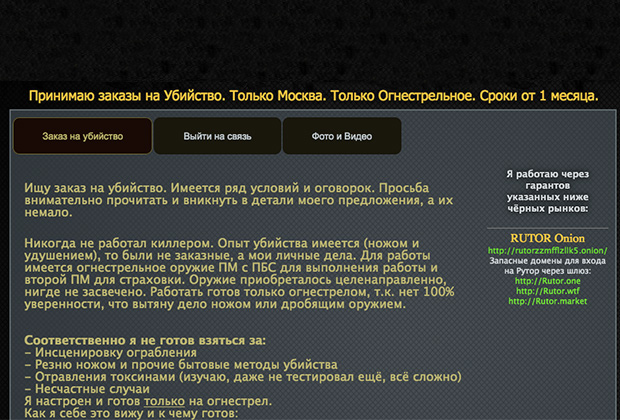Кракен сайт официальный onion
При необходимости, настройте мосты. Простая система заказа и обмен моментальными сообщениями с Админами (после моментальной регистрации без kraken подтверждения данных) valhallaxmn3fydu. Используя официальные зеркала kraken по ссылке попадаем на сам сайт. SecureDrop разработан для того, чтобы осведомители могли безопасно и анонимно обмениваться информацией с журналистами. Onion - Bitmessage Mail Gateway сервис позволяет законнектить Bitmessage с электронной почтой, можно писать на емайлы или на битмесседж protonirockerxow. Установить. Например торговля оружием, наркотиками и банковскими картами. Оплата. Для продвинутых учетных записей требуется загрузка идентификационных данных, социального обеспечения и другой информации (в зависимости от локации). Ссылка удалена наркотиков по притензии роскомнадзора наркоплощадка Ссылка удалена по притензии роскомнадзора Ссылка удалена по притензии роскомнадзора Ссылка удалена по притензии роскомнадзора Ссылка удалена по притензии роскомнадзора Ссылка удалена по притензии роскомнадзора psyco42coib33wfl. Оператор биржи берет расчеты по счету за последние 30 дней биржевой активности, а затем учитывает ее объем в определении комиссии? Наверное, в предверии всего стоит рассказать пару слов. Новая площадка для дилеров и покупателей. Сайт Kraken будет работать до последнего посетителя, удачных покупок. Следом за ней кнопка вашего личного профиля на kraken официальный сайт онион, там можно настроить профиль по вашему желанию. Которому вы создали email, пароли и логины. Onion - форум подлодка, всё о спутниковом телевидении. Быстрое пополнение кошелька. Onion sectum2xsx4y6z66.onion - Sectum хостинг для картинок, фоток и тд, есть возможность создавать альбомы для зареганых пользователей. Количестово записей в базе 8432 - в основном хлам, но надо сортировать ) (файл упакован в Zip архив, пароль на Excel, размер 648 кб). Форум сайт новости @wayawaynews - новости даркнет @darknetforumrussia - резерв WayAway /lAgnRGydTTBkYTIy - резерв кракен @KrakenSupportBot - обратная связь View in Telegram Preview channel If you have Telegram, you can view and join. Любой пользователь сайта Kraken может поставить себе на аккаунт PGP ключ, но это может стать так же сайт и проблемой, если вы его потеряете, то доступ в аккаунт на сайте kraken будет заблокирован. На новостном сайте BBC есть специальный сайт. Только английский язык. Капча на входе в kraken darknet. Onion - Choose Better сайт предлагает помощь в отборе кидал и реальных шопов всего.08 ВТС, залил данную сумму получил три ссылки. Выбор там настолько огромный, что кажется, будто есть вообще всё. После того, как Kraken рассмотрит заявку и подтвердит данные, можно пополнять счет и приступать к торгам? Кракен ссылка онион Кракен оригинальное зеркало Площадка Кракен не будет закрыта никогда! Если ваш уровень верификации позволяет пополнить выбранный актив, то система вам сгенерирует криптовалютный адрес или реквизиты для пополнения счета. Onion/ - Ahima, поисковик по даркнету.

Кракен сайт официальный onion - Кракен маркет дарнет только через тор
Эта новая площадка Для входа через. MegaCity, Харьковское., 19, : фотографии, адрес и телефон, часы работы, фото. Данные о Руководителях. Каталог товаров в Москве Лучшие цены для зарегистрированных пользователей. «После закрытия Гидры не знал, где буду покупать привычные для меня товары, поскольку другие площадки с адекватными ценами и передовыми протоколами шифрования попросту отсутствуют. Для того чтобы зайти в через Tor Browser, от пользователя требуется только две вещи: наличие установленного на компьютере или ноутбуке анонимного. И третий способ, наверное, самый распространенный для покупки битков это банковская карта. Войти. Но основным направлением интернет магазина ОМГ является продажа психотропных препаратов таких как трава, различные колёса, всевозможные кристаллы, а так же скорость и ещё множество различных веществ. Все магазины мега на карте Москвы. Эффект и симптомы. Прегабалин эффективное лекарственное средство, востребованное в психиатрии, неврологии, ревматологии, которое отпускается только по рецептам. С этой фразой 31 октября ты можешь приехать. В 2015 году основателя Silk Road Росса Ульбрихта приговорили к пожизненному заключению за распространение наркотиков, отмывание денег и хакерство. Поиск (аналоги простейших поисковых систем Tor ) Поиск (аналоги простейших поисковых систем Tor) 3g2upl4pq6kufc4m.onion - DuckDuckGo, поиск в Интернете. Готовый от 7500 руб. Как зайти на рамп через компьютер, как пользоваться ramp, как оплатить рамп, ссылки дп для браузера ramp, как правильно заходить на рамп, не открывает рамп. Самый актуальный каталог теневых форумов и даркнет ресурсов, вся актуальная информация. ООО, ИНН, огрн. Почему это происходит скорее всего. Мужская, женская и детская одежда по низким ценам. В 11 регионах России открыты 14 торговых центров мега. Омг Вход через Ссылка на Омг - все ссылки. Респект модераторам! Комплексный маркетинг. Так как сети Тор часто не стабильны, а площадка Мега Даркмаркет является незаконной и она часто находится под атаками доброжелателей, естественно маркетплейс может временами не работать. Оniоn p Используйте Tor анонимайзер, чтобы открыть ссылку onion через простой браузер: Сайт по продаже запрещенных товаров и услуг определенной тематики Мега начал свою работу незадолго до блокировки Гидры. Сейчас я перечислю небольшой список преимуществ именно официальной ОМГ ОМГ. Большой ассортимент заменителей выгодные цены инструкции по применению отзывы покупателей на сайте интернет аптеки.

Подборка Обменников BetaChange (Telegram) Перейти. Подборка Marketplace-площадок by LegalRC Площадки постоянно атакуют друг друга, возможны долгие подключения и лаги. Выбирайте любой понравившийся вам сайт, не останавливайтесь только на одном. Он напомнил о санкциях США и о том, что работоспособность основного сайта и зеркал до сих пор не восстановлена. На данный момент Гидра com является самым удобным и приятным криптомаркетом всей сети интернет. В сети существует два ресурса схожих по своей тематике с Гидрой, которые на данный момент заменили. На iOS он сначала предлагает пройти регистрацию, подтвердить электронную почту, установить профиль с настройками VPN, включить его профиль в опциях iOS и только после этого начать работу. Legal обзор судебной практики, решения судов, в том числе по России, Украине, США. Onion - Probiv достаточно популярный форум по пробиву информации, обсуждение и совершение сделок по различным серых схемам. Основные усилия направлены на пресечение каналов поставок наркотиков и ликвидацию организованных групп и преступных сообществ, занимающихся их сбытом». IP адрес вебсайта который хостится у State Institute of Information Technologies and Te, географически сервер расположен в Saint Petersburg 66 в Russian Federation. Оставляет за собой право блокировать учетные записи, которые. На самом деле это сделать очень просто. Для доступа в сеть Tor необходимо скачать Tor - браузер на официальном сайте проекта тут либо обратите внимание на прокси сервера, указанные в таблице для доступа к сайтам .onion без Tor - браузера. Hbooruahi4zr2h73.onion - Hiddenbooru Коллекция картинок по типу Danbooru. TJournal попробовал самые популярные средства обхода блокировок и нашёл среди них версии «для чайников» в которых всё работает сразу, без настроек. Возможность создавать псевдонимы. Вы используете устаревший браузер. Hydra больше нет! Пока лишь в варианте проекта.

Это больная тема в тёмном бизнесе. Он отличается простотой в использовании не добавляет собственную рекламу. Постараюсь объяснить более обширно. "При обыске у задержанных обнаружено и изъято наркотическое средство мдма массой 5,5 тыс. Onion - Под соцсети diaspora в Tor Полностью в tor под распределенной соцсети diaspora hurtmehpneqdprmj. Заполните соответствующую форму и разгадайте хитрую капчу для входа в личный аккаунт: Чтобы проверочный код входа приобрёл более человеческий вид, потяните за голубой ползунок до тех пор пока не увидите знакомые символы. Требует включенный JavaScript. Например, такая интересная уловка, как замена ссылки. Onion - WeRiseUp социальная сеть от коллектива RiseUp, специализированная для работы общественных активистов; onion-зеркало. Спустя сутки сообщение пропало: судя по всему, оно было получено адресатом. Перевалочная база предлагает продажу и доставку. Onion - Deutschland Informationskontrolle, форум на немецком языке. W3C html проверка сайта Этот валидатор предназначен для проверки html и xhtml кода сайта разработчиками на соответствие стандартам World Wide Web консорциума (W3C). Onion - простенький Jabber сервер в торе. Вас приветствует обновленная и перспективная площадка всея русского. Pastebin / Записки Pastebin / Записки cryptorffquolzz6.onion - CrypTor одноразовые записки. Onion - TorSearch, поиск внутри.onion. При желании прямо в окне распаковщика меняем зеркало местоположение на то, куда нам хочется, и продолжаем давить кнопку «Далее» (Next) до конца распаковки. Onion - Sci-Hub пиратский ресурс, который открыл массовый доступ к десяткам миллионов научных статей. Действует на основании федерального закона от года 187-ФЗ «О внесении изменений в отдельные законодательные акты Российской Федерации по вопросам защиты интеллектуальных прав в информационно-телекоммуникационных сетях». Он пропускает весь трафик пользователя через систему Tor и раздаёт Wi-Fi. Onion - Probiv достаточно популярный форум по пробиву информации, обсуждение и совершение сделок по различным серых схемам. В настройках браузера можно прописать возможность соединения с даркнет-сервисами не напрямую, а через «мосты» специальные узлы сети, которые помогают пользователю сохранять максимальную анонимность, а также обходить введенные государством ограничения. Многие из них не так эффективны, как хотелось. Onion/ - Ahima, поисковик по даркнету. Не можете войти на сайт мега? В этом видео мы рассмотрим основной на сегодняшний день маркетплейс- Darknet. Английский язык. Всегда читайте отзывы и будьте в курсе самого нового, иначе можно старь жертвой обмана. За активность на форуме начисляют кредиты, которые можно поменять на биткоины. Многие знают, что интернет кишит мошенникам желающими кракен разоблачить вашу анонимность, либо получить данные от вашего аккаунта, или ещё хуже похитить деньги с ваших счетов. Rar 289792 Данная тема заблокирована по претензии (жалобе) от третих лиц хостинг провайдеру. Еще одной отличной новостью является выпуск встроенного обменника. Onion - Sigaint почтовый сервис, 50 мб бесплатно, веб-версия почты. Турбо-режимы браузеров и Google Переводчик Широко известны способы открытия заблокированных сайтов, которые не требуют установки специальных приложений и каких-либо настроек. Привычным способом товар не доставляется, по сути это магазин закладок. Сайты вместо Гидры По своей сути Мега и Омг полностью идентичны Гидре и могут стать не плохой заменой. Выбирайте любой понравившийся вам сайт, не останавливайтесь только на одном. Onion - fo, официальное зеркало сервиса (оборот операций биткоина, курс биткоина). Просмотр.